Best Cardiac/ MICS Heart Surgeons in Jharkhand @ Dhanbad
The department of cardiac surgery functions with a core team of best cardiac/ heart surgeons, interventional cardiologists, electrophysiologists in Dhanbad, Jharkhand. They are further supported by a team of the best clinical cardiologists, cardiac anesthesiologists, interventional radiologists, cardiac intensivists and rehabilitation therapists.
Who are the best cardiac/heart surgeons in Jharkhand
At SJAS Hospital, we have some of the top heart surgeons in Dhanbad, Jharkhand who can provide best surgical and interventional treatments for a wide range of cardiac diseases. Expertise of our cardiac/ heart surgeons extends to surgery for Coronary Artery Bypass Grafting, Aneurysms & Pulmonary Embolisms, Aortic & Mitral Valve replacements, as well as Atrial & Ventricular septal defects. We have carved a niche in addressing Complex Valve Repair surgeries too. Success rate of our heart surgeons is among the highest in the country comparable with the best healthcare institutions anywhere in the world.
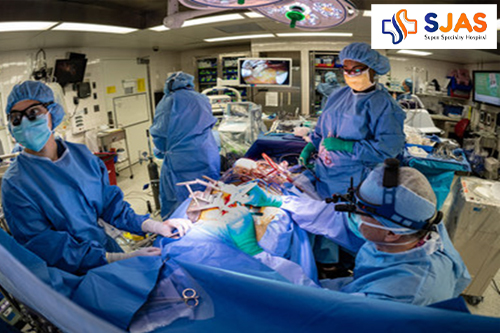
List Of Cardiac Surgeries
A list of cardiac surgeries done by our Cardiac Surgery Department which are supervised by Prof Dr Shashikant is outlined below
CARDIAC SURGERY: Open Heart Surgery & Minimally invasive cardiac surgeries
Cardiac Surgery: Close Heart Surgery
Pediatric (19 years)
Secondary Surgery /others
Secondary Closure
Infrastructure & Hardware's
Open heart surgery, otherwise known as cardiac surgery, requires an array of infrastructure and hardware for executing this complicated medical undertaking to ensure the safety of the patient and successful outcomes. Here's an overview of the key components involved:
1 Operating Room (OR)
The OR must be equipped with the most advanced surgical equipment, including cardiac monitors, an anesthesia workstation (DRAGGER) , surgical lights (GETINGE) , and an operating table (MAQUET MEERA) capable of accommodating the patient and the surgical team.
It should have a controlled environment with appropriate temperature, humidity, and ventilation to minimize the risk of infection.
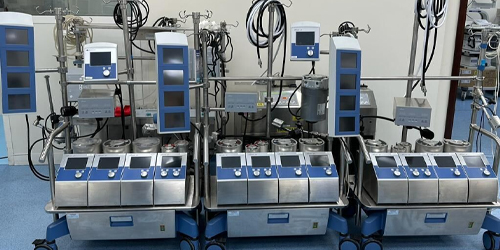
2 Heart-Lung Bypass Machine (Cardiopulmonary Bypass Machine)
This machine temporarily takes over the function of the heart and lungs during surgery by circulating and oxygenating the patient's blood. The state of the art most advanced HEART LUNG MACHINE AI generated is there for better patient services.
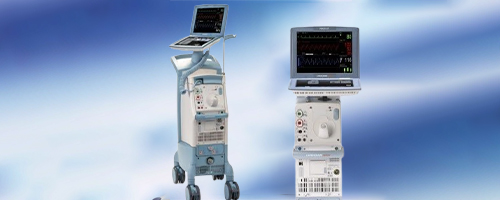
3 Surgical Instruments
Specialized instruments are needed for accessing the heart, opening the chest, and performing the necessary procedures.
Instruments may include retractors, forceps, scissors, clamps, and needle holders, among others are all of therse are imported.
4 Implantable Devices:
• Various implantable devices may be used during open heart surgery, including artificial heart valves, artificial valve ring, Ventricular assist device,IABP etc.
• These devices may be made of metal alloys, polymers, or biological materials.
5 Monitoring and Imaging Equipment:
• Continuous monitoring of the patient's vital signs, including heart rate, blood pressure, oxygen saturation, and electrocardiogram (ECG), is essential during surgery.
•Imaging modalities such as echocardiography, angiography, and intraoperative ultrasound may be used to visualize the heart's structures and assess surgical progress.
6 Sterilization and Infection Control:
• Strict protocols for sterilization and infection control are paramount to prevent surgical site infections and other complications.
• All surgical instruments and equipment must be thoroughly sterilized before use, and the OR environment should be maintained to minimize the risk of contamination.
7 Postoperative Care
The patients, after surgery, need to be kept under close monitoring in specialized ICUs equipped with advanced systems of life support, like ventilators and cardiac monitors.
Involvement of rehabilitation facilities may also take part in the process of postoperative care to help the patients regain power and recover the physique.
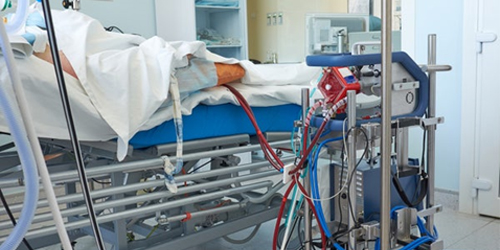
ECMO (Extracorporeal Membrane Oxygenation) and LVAD (Left Ventricular Assist Device)
are both complex devices employed in medicine to support the heart and circulation in patients with the worst form of cardiac failure, but they differ in purpose and the mechanism of operation.
8 ECMO (Extracorporeal Membrane Oxygenation)
Purpose: ECMO offers both cardiac and respiratory support by temporarily replacing the operation of the heart and lungs. It oxygenates the blood and eliminates carbon dioxide, just like the lungs do, as it also keeps up the circulation.
Application: It is used mainly in cases of acute respiratory failure, severe cardiac failure, or during cardiac surgery to provide temporary support for the heart and lungs.
Components: The ECMO has cannulation of large vessels to divert blood into an external circuit that includes a pump, oxygenator, and tubing. The oxygenator adds oxygen to the blood and takes away carbon dioxide, and the pump circulates it back into the patient.
Duration: ECMO is generally used until either the heart or lungs can recover sufficiently or other treatment options become available, such as transplantation.
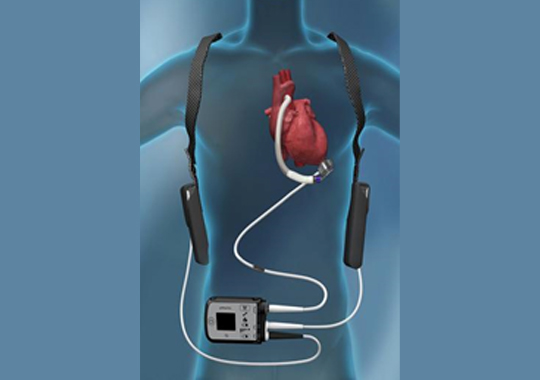
LVAD (Left Ventricular Assist Device):
Function: An LVAD is a mechanical pump surgically implanted to assist the failing left ventricle of the heart in pumping blood to the body. It does not provide respiratory support like ECMO.
Application: LVADs are mainly used in patients with end-stage heart failure who are awaiting heart transplantation (bridge to transplant) or as destination therapy for those who are not candidates for transplantation.
Components: An LVAD consists of a pump, an inflow cannula that withdraws blood from the left ventricle, and an outflow cannula that returns blood to the aorta or other major artery. The pump is usually implanted in the abdomen or chest, with the driveline exiting the body to connect to an external controller and power source.
Chronic Support: Unlike ECMO, which is used for short-term support, LVADs can provide long-term support to patients with chronic heart failure. Some LVADs are designed to be fully implantable, while others have external components that require regular monitoring and maintenance.
In summary, ECMO and LVAD are important tools in the management of severe cardiac failure, but they have different functions and purposes in different clinical scenarios. While ECMO provides temporary cardiac and respiratory support, LVADs are used for long-term mechanical circulatory support of the failing left ventricle.
Briefly, open heart surgery infrastructure and hardware demand a very high level of technological sophistication, skilled personnel, and strict quality control measures to ensure the safety and success of the patient's life.
